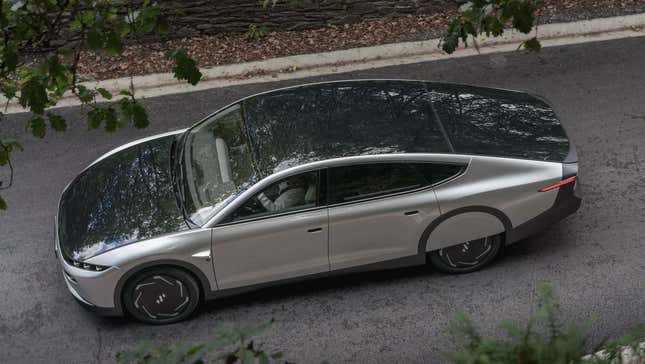
Upstart Dutch automaker Lightyear said recently it’s officially putting its solar-powered car, the Lightyear 0, into production. That’s a first for a vehicle powered directly by sunlight.
Despite the fact the 0 looks pretty much like a conventional electric sedan, the cost for the 150-or-so people who have pre-ordered the car is $259,000. That’s certainly not cheap, but if it’s a car that can really run on the power of the sun I suppose you can chalk that up to an early adopters fee.
The company says it plans to build a total of about a thousand 0s at a plant in Finland. Production will start slowly – just a single car per week. That number should jump to about five cars per week in the second half of 2023.

The car will apparently be able to drive for two months without charging in Amsterdam during the summer. Not too bad. You’ll really be in luck if you live in Portugal, though. Lightyear’s CEO and co-founder, Lex Hoefsloot, tells Bloomberg that buyers in that country will be able to go up to seven months between chargers.
The car’s curved solar panels on its hood and roof suck in enough sun juice to add as much as 43 miles of range each day. If you live somewhere that never sees sun (the U.K.) you probably shouldn’t expect results like this. That being said, fully charged, the 0 is expected to have up to a 388-mile range.
Alas, it does not look like the 0 and its 0.19 drag coefficient will make its way to our shores.
If that high price is keeping you away from the 0, don’t worry. Lightyear is reportedly also developing the Lightyear 2. It’ll be a higher-volume car with a starting price of around $31,500. That vehicle is expected to go into production by 2025.